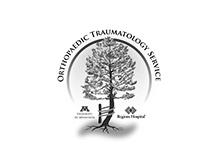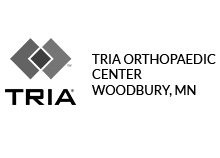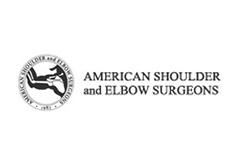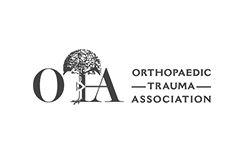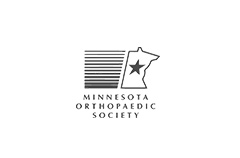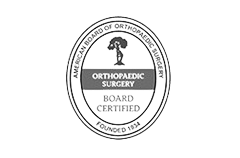Cubital Tunnel Syndrome
- Diagnosis
- Non-operative Options
- Operative Options
- Before Your Surgery
- After Your Surgery
- Your Rehab
What is Cubital Tunnel Syndrome?
Cubital Tunnel Syndrome is a condition characterized by compression of the ulnar nerve in an area of the elbow called the cubital tunnel.
Anatomy of the Cubital Tunnel
The ulnar nerve travels down the back of the elbow behind the bony bump called the medial epicondyle, and through a passageway called the cubital tunnel. The cubital tunnel is a narrow passageway on the inside of the elbow formed by bone, muscle, and ligaments with the ulnar nerve passing through its center. The roof of the cubital tunnel is covered with a soft tissue called fascia.
When the elbow is bent, the ulnar nerve can stretch and catch on the bony bump. When the ulnar nerve is compressed or entrapped, the nerve can tear and become inflamed leading to a variety of symptoms, called cubital tunnel syndrome.
What are the Signs and Symptoms of Cubital Tunnel Syndrome?
In general, signs and symptoms of Cubital Tunnel Syndrome arise gradually, progressing to the point where the patient seeks medical attention. Left untreated, Cubital Tunnel Syndrome can lead to permanent nerve damage in the hand. Commonly reported symptoms associated with Cubital Tunnel Syndrome include:
- Intermittent numbness, tingling, and pain to the little finger, ring finger, and the inside of the hand. These symptoms occur more frequently at night, and with elbow bending or prolonged resting on the elbow.
- Aching pain to the inside of the elbow.
- Weakness in hand with diminished grip strength.
- Diminished sensation and fine motor control in the hand causing the person to drop objects or have difficulty in handling small objects.
- Muscle wasting in the hand and permanent nerve damage, if left untreated.
What are the Causes of Cubital Tunnel Syndrome?
The common causes responsible for cubital tunnel syndrome include:
- Trauma
- Repetitive motion
- Frequent pressure on the elbow for extended periods due to sitting posture.
- Medical conditions such as bone spurs, ganglion cysts, or tumors in the cubital tunnel leading to pressure and irritation of the ulnar nerve.
Diagnosis of Cubital Tunnel Syndrome
Your physician will review your medical history and perform a thorough physical examination of your elbow.
Your physician may order X-ray and electro diagnostic tests such as electromyography and nerve conduction studies. These tests can assist your doctor in determining how well the nerve is functioning and locate areas of muscle wasting and nerve compression.

I may recommend conservative treatment options initially to treat the symptoms unless muscle wasting or nerve damage is present.
Conservative Treatment Options for Cubital Tunnel Syndrome
Conservative treatment options may include:
- Avoid frequent bending of the elbow.
- Avoid pressure to the elbow by not leaning on it. Elbow pads may be worn to decrease pressure when working at a desk.
- Wear a brace or splint at night while sleeping to keep the elbow in a straight position. You can also wrap the arm loosely with a towel and apply tape to hold it in place.
- Avoid activities that tend to bring on the symptoms.
- NSAIDs (Non-Steroidal Anti-Inflammatory Drugs) such as ibuprofen or aspirin may be ordered to reduce swelling.
- Referral to OT (Occupational Therapy) for instructions in strengthening and stretching exercises may be recommended.
If conservative treatment options fail to resolve the condition or if muscle wasting or severe nerve compression is present, your surgeon may recommend a surgical procedure to treat your condition.
The goal of cubital tunnel surgery is to reduce the pressure on the ulnar nerve by providing more space for the nerve to move freely and to increase blood flow to promote healing of the ulnar nerve. There are different surgeries that can be performed to treat your condition, such as:
- Medial epicondylectomy: This surgery involves removing the medial epicondyle, the bony bump on the inside of the elbow, enabling the ulnar nerve to glide smoothly when the elbow is flexed and straightened.
- Ulnar nerve transposition:
Your surgeon will decide which option is best for you depending on your specific circumstances.

Once you and your doctor decide that surgery will help you, you will need to learn what to expect from the surgery and how to actively participate in the treatment plan for the best results afterward.
Preparing mentally and physically for surgery is an important step toward a successful result. Understanding the process, and your role in it, will help you recover more quickly and have fewer problems.
Before surgery, your doctor will perform a complete physical examination to make sure you don’t have any conditions that could interfere with the surgery or the outcomes.
- Routine tests, such as blood tests and X-rays may be performed.
- Discuss any medications you are taking with your doctor as you may have to stop or alter your intake before surgery. If you are taking aspirin or anti-inflammatory medications or any drugs that increase the risk of bleeding, you will need to stop taking them one week before surgery to minimize bleeding.
- Discuss with your doctor about preparing for potential blood replacement, medical interventions and other treatments prior to surgery.
- Report any infections to your surgeon. Surgery cannot be performed until all infections have cleared up.
- If you smoke, you should stop or cut down as smoking interferes with wound healing and can affect your recovery.
- Have someone available to take you home, as driving is not recommended for at least 24 hours or as advised.
- You may need help with everyday tasks such as cooking, shopping and laundry.
- Put items that you use often within easy reach, so you won’t have to stretch and bend as often.
- After Surgery Video
- Elbow Surgery Recovery Video
- Elbow Elevation Technique Video
Postoperative Care for Cubital Tunnel Surgery
After surgery, your surgeon will give you guidelines to follow depending on the type of repair performed and the surgeon’s preference. Common post-operative guidelines include:
- A bulky dressing with a plaster splint is usually applied following surgery for 10-14 days.
- Elevating the arm above heart level and moving the fingers are important to prevent swelling.
- The arm dressing is removed after 10-14 days for removal of the sutures.
- Elbow immobilization for 3 weeks after surgery is usually indicated, or longer depending on the repair performed.
- Ice packs are applied to the surgical area to reduce swelling. Ice should be applied over a towel to the affected area for 20 minutes every hour. Keep the surgical incision clean and dry. Cover the area with plastic wrap when bathing or showering.
Risks and Complications of Cubital Tunnel Surgery
Most patients suffer no complications following Cubital Tunnel surgery, however, complications can occur following elbow surgery and include:
- Infection
- Nerve damage causing permanent numbness around the elbow or forearm.
- Elbow instability
- Elbow flexion contracture
- Pain at site of scar
- Symptoms unresolved even after the surgery
Want to know more?
- Physical Therapy Intro Video
- Finger ROM Video
- Standard Elbow ROM Video
Occupational Therapy will be ordered a few weeks after surgery for strengthening and stretching exercises to maximize use of the hand and forearm







